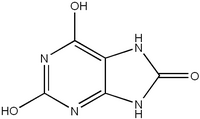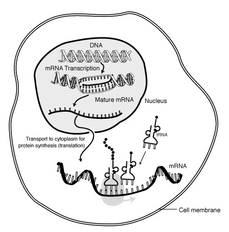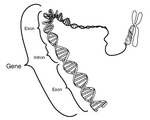For seven summers while I was in high school and college, I worked at Louisiana Lions Camp, a camp serving children with physical and cognitive disabilities. This experience shaped my life. I did not realize how much until years later when I made the choice to change careers and return to working at a camp for children with developmental disabilities.
When I made the decision to leave the consulting business that I had been in for thirteen years and take a job as camp director for a nonprofit organization, Children's Association for Maximum Potential, I had mixed emotions. I was leaving a job that provided a lot - a comfortable income, travel, challenge, and stability. I was going into a world that was a far cry from the competitive world of negotiating contracts for major corporations. I was accepting a position in which I would be responsible for the health, safety, welfare, and happiness of hundreds of children with severe and profound disabilities, and I would also be the person responsible for recruiting, hiring, training, and managing a group of up to 250 high school- and college-age volunteers who staff the camp each summer. The main question on my mind was "Did I make the right decision?"
The following story, which was told to me soon after arriving in San Antonio, answered my question more powerfully than anything else.
While going through the files of the previous camp director, I came across a picture of a little boy in a wheelchair. That he was in a wheelchair was not a surprise, because many of the children at Camp CAMP were in wheelchairs.
The picture was striking, though, because it showed a boy who was not only in a wheelchair, but his arms were encased in padded braces and bound to the chair with cloth restraints, his bottom lip was missing, and he had a small device that I had never seen before in his mouth. He was glaring at the camera. It was an extremely intimidating picture. I asked about the boy in the picture.
"Is this one of the kids from camp?"
The response was, "Oh, yeah, that's Jim(*).
There's a really neat story about that kid."
"Tell me," I said.
"Jim came to camp from an institution. He has Lesch-Nyhan Syndrome."
"OK, now tell me something that I can understand. What's Lesch-Nyhan?"
"It's a syndrome that causes a chemical imbalance in the blood. It causes self-abuse. That's why his hands are restrained. If they weren't, he would hit himself or chew on his fingers. That's what happened to his bottom lip; he chewed it off when he was about two years old. That device in his mouth is a guard to keep him from chewing on his tongue." * Not his real name.
"So far your story isn't very cheerful. Please get to the good part," I said.
"Well, when Jim came to camp for the first time, his diagnosis on the health information form was Lesch-Nyhan. It also said that he was profoundly mentally retarded and incapable of communication. We also found out soon after he got to camp that he was grumpy and somewhat mean.
"The counselor we assigned to him was scared of him at first, but she began working with him as best as she could. She would take him out of his wheelchair from time to time and rub his back and arms to cool him off. She would play 'coochie-coochie' with him, talk and sing to him, and hug him. Pretty soon, Jim started to respond to her by smiling and giggling. Later in the week, he began to smile and laugh and hug people. He was happy. His smile could light up a whole room.
"The most amazing thing was that we found that he could communicate. No, he didn't begin to talk, but he could communicate with us nonverbally. At the end of the session, he was voted to receive one of the weekly camper awards, 'Most Enthusiastic.'"
I indicated that, yes, it was a good story with a happy ending, but then I was told that there was more.
"When the folks from the institution came to pick up Jim, they instantly noticed the change in his behavior and began asking questions about what happened during his session at Camp CAMP. The change was so profound that after they got back to the institution they retested Jim and found that he wasn't profoundly mentally retarded and that he was capable of communicating and learning. They have since changed his level of educational instruction and moved him into a group home. They told us that they retested him only because of the radical change in his behavior that came about while he was at Camp CAMP."
Why is this so powerful for me? Jim is still in a wheelchair with his hands restrained. He still has Lesch. Nyhan. He's still missing his bottom lip. The difference is that because someone reached out and did more than just get him from place to place and keep him clean and fed while he was at the camp, his life was completely changed - for the better. He's getting an education and experiencing things that he never would have if he had not come to Camp CAMP.
I knew right then that I had made the right decision. I was where I should be, doing what I should be doing.
By the way, if you talk to the counselor who took care of Jim, she will tell you that she "just loved the boy." That's what it's all about, isn't it?
COPYRIGHT 1997 American Camping Association
COPYRIGHT 2004 Gale Group




